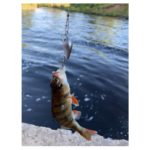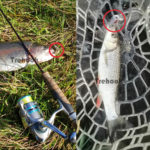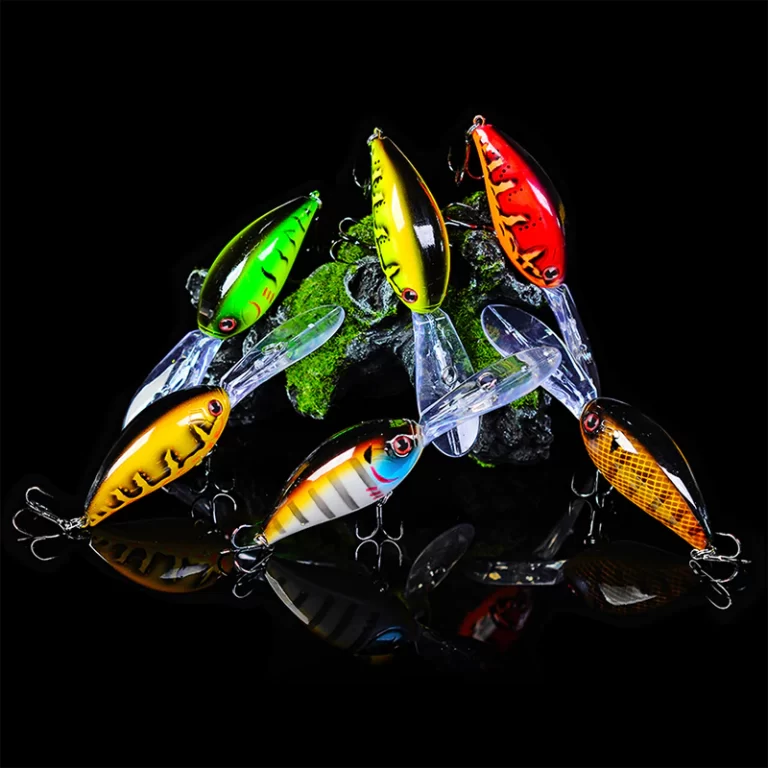Unravelling the Truth: Debunking the Most Common Crankbait Misconceptions
Introduction
A crankbait. You’ve heard about it, you’ve used it, but have you fully understood it? We’re diving deep into the waters of bass fishing to clarify some widely held misconceptions about crankbaits.
Why is this important, you might ask? Well, understanding the correct use of crankbaits in bass fishing can be a game-changer. It’s not just about casting the line and hoping for the best, but rather developing an intimate understanding of your tools and the behaviour of the fish you’re seeking. It’s the difference between a leisurely day at the lake and a victorious angling adventure.
Curious about what misconceptions we’re going to debunk? Stick around and let’s set the record straight!
Understanding Crankbaits
Before diving into the misconceptions, it’s crucial to understand what crankbaits are and how they function in bass fishing. Crankbaits are hard-bodied lures designed to mimic the appearance and movement of baitfish. They typically feature a diving lip, which allows them to dive to certain depths when retrieved. Crankbaits come in various shapes, sizes, and colours, each tailored for specific fishing conditions and bass behaviours.
Crankbaits are versatile lures that can be used to cover a wide range of water depths. Their primary function is to attract bass through their lifelike swimming action and enticing vibrations. When retrieved, the diving lip causes the crankbait to dive, imitating a distressed or injured baitfish. This action triggers predatory instincts in the bass, leading them to strike the lure.
Crankbait Misconceptions 1: “Crankbaits are Only for Deep Water Fishing”
Many anglers mistakenly believe that crankbaits are solely effective in deep water. This misconception stems from the notion that crankbaits are designed to dive and reach specific depths. However, crankbaits can be equally successful in shallow water as well.
The origins of this misconception can be traced back to the characteristics of certain crankbait models. Some crankbaits are indeed designed to reach significant depths, making them suitable for deep-water fishing. However, there are also shallow-diving and medium-diving crankbaits explicitly designed for targeting bass in shallower areas.
To debunk this misconception, consider that bass are not exclusively found in deep water. They often inhabit shallow structures like weed beds, submerged timber, or rocky areas close to the shore. Shallow-diving crankbaits are ideal for these situations, allowing you to effectively target bass in shallower depths.
When fishing in various water depths, it’s essential to adjust your crankbait selection accordingly. Shallow-diving crankbaits are perfect for targeting bass in depths up to five feet, while medium and deep-diving crankbaits are better suited for deeper waters. By understanding the range of crankbaits available and their intended depths, you can confidently use crankbaits to catch bass in both shallow and deep water conditions.
Crankbait Misconceptions 2: “Colour of the Crankbait is the Most Important Factor”
Another common misconception among anglers is that the colour of the crankbait is the most critical factor when it comes to attracting bass. While colour does play a role in certain situations, it is not the sole determinant of a crankbait’s effectiveness.
The origins of this misconception can be attributed to the extensive selection of crankbait colours available on the market. With countless colour variations, it’s easy for anglers to become overwhelmed and believe that choosing the right colour is the key to success. However, it’s important to remember that bass primarily relies on their instincts and the lure’s action, rather than the specific colour.
To debunk this misconception, let’s examine the evidence. Numerous studies have shown that factors like lure action, vibration, and the presentation of the crankbait are more critical than colour in triggering a bass’s feeding response. Bass are primarily visual predators and are attracted to the movements and vibrations of the crankbait, rather than the colour alone.
While colour can be a consideration, it is more of a secondary factor. Instead, focus on selecting crankbaits with realistic swimming action, proper diving depth, and the ability to create enticing vibrations in the water. By paying attention to these factors, you will have a greater chance of success regardless of the crankbait’s colour.
Crankbait Misconceptions 3: “All Crankbaits Work the Same Way”
Some anglers mistakenly believe that all crankbaits work in the same way, regardless of their design or specifications. This misconception arises from a lack of understanding of the varied design and functionality of different types of crankbaits.
To debunk this misconception, it’s crucial to delve into the different types of crankbaits available. Crankbaits can be broadly categorized into three types: shallow-diving, medium-diving, and deep-diving. Each type has its unique characteristics and is designed to perform best within specific depth ranges.
Shallow-diving crankbaits typically have a shorter diving lip and are designed to dive to depths of three to five feet. They are ideal for fishing in shallow structures or when targeting bass in the upper water column.
Medium-diving crankbaits have a slightly longer diving lip, allowing them to dive to depths ranging from six to ten feet. These crankbaits are suitable for targeting bass in mid-depth water or when fishing around submerged structures.
Deep-diving crankbaits have the longest diving lip, enabling them to reach depths of up to 20 feet or more. They are designed for fishing in deep-water scenarios or when bass are holding close to the bottom.
Understanding the unique characteristics and diving capabilities of each crankbait type will significantly enhance your fishing success. By selecting the appropriate crankbait for the specific fishing situation, you can effectively present the lure at the desired depth and trigger strikes from bass.
Crankbait Misconceptions 4: “Crankbaits are Not Suitable for Clear Water”
A common misconception among anglers is that crankbaits are not effective in clear water conditions. This misconception stems from the belief that bass in clear water is more cautious and less likely to strike a crankbait. However, this is far from the truth.
The origins of this misconception lie in the misconception that crankbaits have a loud and aggressive presentation that may spook bass in clear water. While it’s true that some crankbaits produce more noise and vibration than others, there are techniques to adapt to clear water conditions and increase your chances of success.
To debunk this misconception, it’s essential to understand that not all crankbaits have the same aggressive action. Some crankbaits are specifically designed with subtle swimming action, making them more suitable for clear-water fishing. These crankbaits mimic the movement of injured or dying baitfish, enticing bass in clear water without alarming them.
When fishing in clear water, opt for natural-coloured crankbaits with a more subtle action. Slow down your retrieve and focus on making precise casts to target specific areas where bass may be holding. By adapting your approach and selecting the right crankbaits for clear water conditions, you can effectively entice strikes from even the most cautious bass.
Crankbait Misconceptions 5: “Crankbaits Attract Only Large Bass”
Many anglers believe that crankbaits are designed exclusively to attract large bass. This misconception may stem from the fact that crankbaits often imitate larger baitfish, leading to the assumption that only big bass will strike them. However, this is not entirely accurate.
The origins of this misconception lie in the visible presence of larger crankbaits in the market, which are designed to target trophy-sized bass. However, crankbaits come in various sizes, and smaller versions are equally effective in attracting bass of all sizes.
In reality, crankbaits are versatile lures that can attract bass of different sizes, from small to trophy-sized. Smaller crankbaits are particularly effective for targeting schooling bass or when bass are feeding on smaller baitfish. By selecting the appropriate size crankbait based on the forage and prevailing conditions, you can successfully catch bass of various sizes.
Additionally, the diving depth of the crankbait also plays a role in the size of the bass attracted. Shallow-diving crankbaits are more likely to entice strikes from smaller bass in shallower areas while deeper-diving crankbaits have the potential to attract larger bass in deeper water.
Conclusion
In conclusion, understanding the truth behind common misconceptions about crankbaits is crucial for bass anglers looking to improve their fishing success. By debunking these misconceptions, we’ve highlighted the versatility of crankbaits and their effectiveness in various fishing conditions.
Remember, crankbaits are not limited to deep-water fishing and can be equally effective in shallow areas. While colour is a consideration, factors such as lure action and presentation are more critical in enticing bass strikes. Furthermore, crankbaits come in different types, each with its unique design and functionality for specific depth ranges.
Don’t overlook the effectiveness of crankbaits in clear water conditions. Adapt your approach and select crankbaits with a more subtle action to entice strikes from cautious bass. Lastly, crankbaits can attract bass of all sizes, not just large ones. Tailor your crankbait selection based on prevailing conditions and the size of the bass you’re targeting.
By understanding and applying the correct usage of crankbaits, you’ll be well-equipped to enhance your bass fishing skills and experience greater success on the water.
What to do Next!
Are you ready to take your bass fishing game to the next level? Don’t miss out on the incredible potential of crankbaits! Armed with the knowledge to debunk common misconceptions, you now have the power to unlock the true potential of these versatile lures.
Whether you’re a seasoned angler or just starting out, it’s time to embrace the power of crankbaits and experience the thrill of reeling in that elusive bass. Equip yourself with a variety of crankbaits, each tailored for specific depths and fishing conditions, and watch as the bass strike with ferocity.
So, what are you waiting for? Dive into the world of crankbaits and witness the incredible results for yourself. Explore different designs, colours, and diving depths, and become a master at presenting these lifelike lures with precision. It’s time to cast, retrieve, and feel the exhilaration of bass slamming your crankbait.
Don’t let misconceptions hold you back any longer. Take the leap, venture into new fishing grounds, and let crankbaits be your secret weapon for success. Unravel the truth, defy the myths, and become a force to be reckoned with in the bass fishing world.
Get your crankbaits ready, and let the adventure begin!
References
- Bassmaster: How to Fish Crankbaits
- Outdoor Life: Crankbait Fishing for Bass
- Wired2Fish: How to Fish Crankbaits Year-Round
- BassResource: Crankbait Tips for Bass Fishing
- FLW Fishing: Crankbait Fishing 101













Leave a comment